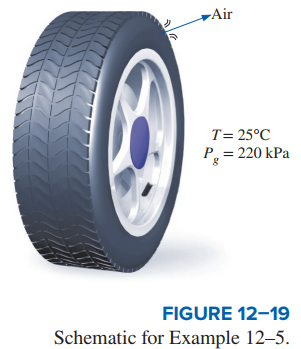Air Loss from a Flat Tire
Air in an automobile tire is maintained at a pressure of 220 kPa (gage) in an environment where the atmospheric pressure is 94 kPa. The air in the tire is at the ambient temperature of 25°C. A 4-mm-diameter leak develops in the tire as a result of an accident (Fig. 12–19). Approximating the flow as isentropic determine the initial mass flow rate of air through the leak.
